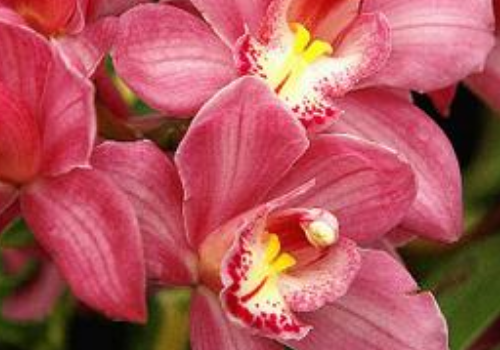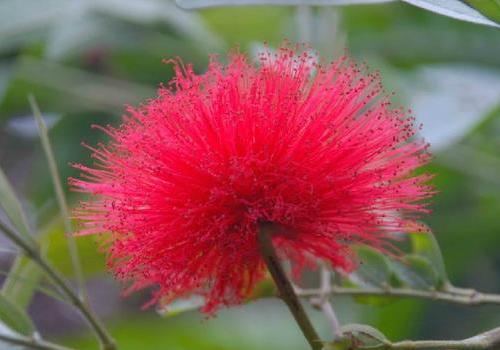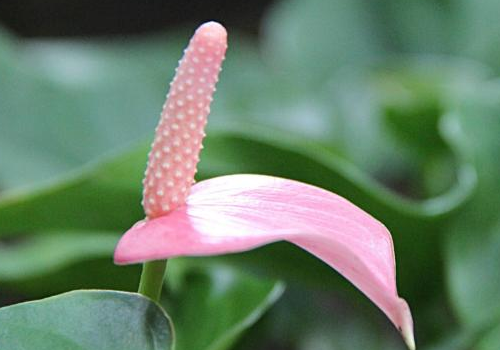How to prune Cymbidium and what kind of soil is used for flower culture?
Cymbidium is a kind of plant that many people like, which has a certain ornamental value. How to prune the flower branches of Cymbidium? What kind of soil is used for breeding?
How to prune the branches of Cymbidium:
1. Cut the flower branches from below, which not only does not affect the beauty, but also ensures that it does not consume too much nutrients. In addition, Cymbidium likes to be wet and sunny, and the suitable temperature is between 10 ℃ and 28 ℃. After cutting off the inflorescence, move it to a well-ventilated windowsill, which can promote its better growth. After about a week, the flowers will be moved outdoors, step by step, do not suddenly move from indoor to outdoor, due to sudden changes in environment and light. Affect its growth.
2. in addition, there is no need to change the pot after the flower branch is pruned, and the rotten and blackened cultivation substrate in the flowerpot can be simply cleaned and replaced. Cymbidium is not afraid of crowding, and the more crowded it is, the better it grows, which is more conducive to its own flowering.

What kind of soil is used for Cymbidium culture:
1. The principle of soil selection
When raising Cymbidium, in principle, it is necessary to choose fertile acidic soil with good drainage, and generally do not choose to use soil.
When making soil, many kinds of soil are generally mixed and allocated for the second time, while the allocation should be kept loose and ventilated.
2. Soil allocation
In general, when configuring the soil, water moss, coconut bran, bark, peat and broken bricks can be used as substrates to cultivate Cymbidium.
After cleaning these soils, match them according to different needs to ensure that they are loose, breathable, hydrated and moisturized.
In fact, when cultivating Cymbidium, we can choose orchid soil, which is the soil where orchids have been planted before. such soil contains orchid associated bacteria, which plays a very important role in the growth of Cymbidium.
If you think you don't know how to match, you can buy some special soil for orchids.
All right, this is the end of the introduction of Cymbidium pruning, all of you understand.
How to prune the flower branches of Cymbidium, the pruning method of Cymbidium / pruning after flowering
Cymbidium, a kind of hybrid orchid with many varieties, has nearly 1000 varieties so far. It has large flowers and rich colors, so it is deeply loved by flower friends. During the flowering period of Cymbidium, we can enjoy its beauty, but after its flowers fade, we need to prune it. How to prune the branches of Cymbidium? Let's go with the editor to take a look at the pruning methods of Cymbidium.
The method of pruning the branches of Cymbidium is very important.
In the cultivation methods of Cymbidium, in addition to light, water and fertilizer, there is another point that can not be ignored, that is, pruning flower branches. Pruning is a technical skill, especially the flower branch pruning should be paid attention to, because the wrong pruning may kill the plant, so how to prune the flower branches of Cymbidium requires us to master the method.
2. Pruning methods of Cymbidium
1. Reasons for pruning flower branches
Before we understand how Cymbidium is pruned, we need to know the reasons for pruning. In this regard, the editor summed up two points:
After the ① Cymbidium blossoms, the flowers are large, numerous, overweight, easy to lodge and need pruning.
The flowering period of ② Magnolia is 1-2 months, after which the flowers will gradually wither. Cutting off the flower branches at this time can avoid consuming too much nutrition, is conducive to the germination of new buds, and does not affect the flowering in the coming year.
2. Pruning method
① if there are many flowers, you can cut off the big flower orchid branch from the bottom, so that it does not affect the beauty and ensures that it does not consume too much nutrients.
After the ② orchid leaves, cut off the remaining flowers, gently remove the plant from the pot, clean up the diseased roots, old roots and residual roots, and then implant them in a slightly larger pot.
In addition, the flower branches do not need to change pots after pruning, and the rotten and blackened cultivation substrate in the flowerpot can be simply cleaned and replaced. Cymbidium is not afraid of crowding, and the more crowded it is, the better it grows, which is more conducive to its own flowering.
3. Points for attention
How to prune the flower branches of Cymbidium? In addition to knowing the method, there are some points to pay attention to, such as protecting the new buds and false bulbs in the process of pruning. The original false bulbs and leaves of Cymbidium need to be preserved and can not be pruned, because the plant is composed of female ball, daughter ball and grandball. Among them, Sun Qiu grows the fastest and is also the bulb that sprouted and blossomed that year.
In addition, Cymbidium likes to be wet and like the sun. After cutting off the inflorescence, we should move it to a well-ventilated windowsill to promote its better growth. After about a week, move the cymbidium to the outdoors, step by step, do not suddenly move from indoor to outdoor, due to sudden changes in environment and light, affecting its growth.
Culture methods of Cymbidium take good care of the beautiful Cymbidium
Many people who have been to the flower market should know that there is a kind of flower that looks very attractive from afar. Its leaves are long green, the flowers are rough, bold and colorful, and they are deeply loved by people who look at the flowers. This is Cymbidium. Its flowers are huge, colorful, colorful, neat and strong in shape and texture, and it is a rising star in orchids. So, how to cultivate Cymbidium?
1. Brief introduction of Cymbidium
Cymbidium (Latin name: Cymbidium), also known as Cymbidium, cicada orchid, Simbilan, etc., is a general term for bright colors and large flowers bred by artificial hybridization among orchids native to India, Myanmar, Thailand, Vietnam and southern China. Cymbidium cymbidium has long green leaves, rough flower posture, bold and magnificent, is the world-famous "orchid new star". With the delicate fragrance and elegance of the national orchid and the rich and colorful of the foreign orchid, it is very popular in the international flower market and is deeply loved by flower lovers.
Second, how to raise Cymbidium
Cymbidium is not a species of natural products, but produced by artificial hybridization. it first appeared in the United Kingdom in 1889, and then spread to Europe and the United States and other places, swept the foreign flower market. At present, Cymbidium has become the most quality category of orchids, with nearly 20000 cultivated varieties.
The tissue culture period of Cymbidium is longer, which is about 3 years. When the tissue culture seedling carries on the flower bud differentiation, it means that it has entered the growth period, that is, the normal flowering and growth. In the stage of reproductive growth, the lateral buds of the guardrail gradually develop into flower buds, and then the scape is produced.
After the formation of the flower bud, in order to make it blossom normally and the flower branches are beautiful, it is necessary to control the temperature around it. If the temperature is outside its normal growth range, it will cause its elongation and growth to be inhibited, which is not conducive to its normal flowering. Especially during the flowering period, the temperature should be strictly controlled. If you need to interfere with its flowering period to make it bloom longer, you can also maintain the temperature at 5-15 degrees Celsius during flowering, which can extend the flowering period for a quarter.
3. Culture methods of Cymbidium
1. Lighting, in addition to the high temperature in midsummer, can directly illuminate the light, and block 60% of the light in the high temperature season to prevent scorching.
2. Watering, in principle, as soon as it is dry and thoroughly. It is watered every three or four days in spring. When the temperature rises to extreme heat, the watering times can be increased as appropriate.
3. Fertilize and apply thin fertilizer frequently during the growth period. Long-term compound solid fertilizer, sprinkle more than ten grains in the basin at a time. If you have too much, you will burn roots.
4. remove the buds, remove the excessive buds on the old bulbs in time, and remove the rest. This operation can be done until the end of November, and future seedlings should be retained.
5. Pest control: Cymbidium is vulnerable to diseases and insect pests if the cultivation environment is bad. Common diseases include Fusarium disease, black rot, soft rot, anthracnose, gray mold, white silk disease, etc., so it is necessary to spray fungicide every half a month to prevent the occurrence of diseases, and special attention should be paid to the cleaning of environmental sanitation, water sources, plant materials and utensils.
6. Pruning: the pseudobulm of Cymbidium generally contains more than 4 leaf buds. In order not to disperse nutrition, the new buds and their growing points must be removed thoroughly. This operation should start from the end of the flowering period, pick buds once a month and stop before the new flowering period, so as to concentrate nutrition, strengthen the mother corm and make the flowers bloom bigger and more.
Finally, on how to cultivate Cymbidium, we will briefly introduce to you the important links of reproduction, humidity, temperature, fertilization and watering. We want to cultivate high-quality potted plants of Cymbidium. In addition, we also need to know more about the ecological habits of Cymbidium, know its preferences, and take good care of it.
- Prev

Is Zhu tassel poisonous? what are the breeding methods?
Zhu tassel is not suitable to be placed indoors, and it grows best in places with plenty of light and has the highest ornamental value. Is the red tassel poisonous? What are the methods of reproduction: is Zhu tasseled poisonous? Zhu tasseled flowers are non-toxic, so we don't have to worry too much. It is a deciduous shrub or small tree of the genus Chrysanthemum in Leguminosae.
- Next

What is the difference between pink palm and red palm and white palm? what about the rotten roots?
Pink palm is very suitable for family cultivation, with evergreen leaves and beautiful flowers. What is the difference between pink palm and red palm and white palm? What about rotten roots: what is the difference between pink palm and red palm and white palm: the difference of shape, the shape of pink palm: leaves drawn from the root stem, long stalked, solitary, oblong heart-shaped or oval, dark fresh green
Related
- Fuxing push coffee new agricultural production and marketing class: lack of small-scale processing plants
- Jujube rice field leisure farm deep ploughing Yilan for five years to create a space for organic food and play
- Nongyu Farm-A trial of organic papaya for brave women with advanced technology
- Four points for attention in the prevention and control of diseases and insect pests of edible fungi
- How to add nutrient solution to Edible Fungi
- Is there any good way to control edible fungus mites?
- Open Inoculation Technology of Edible Fungi
- Is there any clever way to use fertilizer for edible fungus in winter?
- What agents are used to kill the pathogens of edible fungi in the mushroom shed?
- Rapid drying of Edible Fungi

